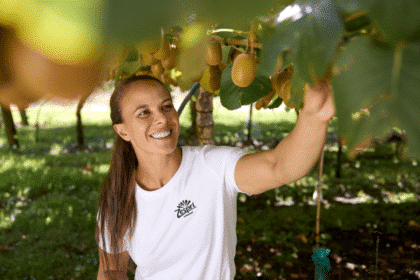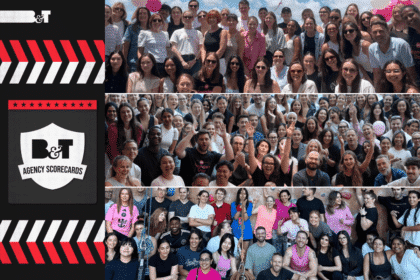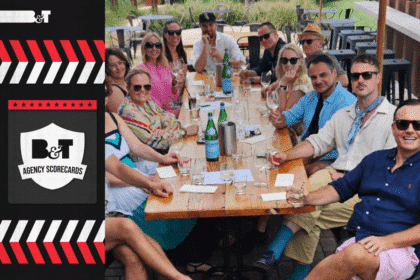Tourism and Events Queensland wanted a campaign that would win back tourists for the Whitsundays from overseas destinations. The Hallway thought outside the box. Lucy Clark finds out what lessons were learnt along the way.
The brief
TEQ’s brief to The Hallway was to create a socially-fuelled idea that would stimulate earned conversations and drive awareness of the Whitsundays as a holiday destination. The target audience was Australia’s ‘social fun-seekers’ – people who are digitally savvy and socialise as much online as they do offline.
Simon Lee, creative partner at The Hallway, explains: “The Whitsundays was starting to lose it cachet as a world-class destination. Back in the ‘70s it was unmistakably a world-class, glamorous place to holiday. The social fun-seekers acknowledged it’s beautiful, but were starting to see it as slightly boring – the Whitsundays was losing market share to overseas destinations.”
Steve McRoberts, group executive for marketing at TEQ, adds: “We wanted to rebuild that reputation that the Whitsundays used to have, and give people a deeper understanding of what the islands have to offer.”
The campaign
The Hallway created ‘The Whitsundays: A movie that’s waiting to be written’.
The campaign ran on Facebook and invited people to write a scene of a movie, set in the Whitsundays. Every day for 21 days, a new photo was posted, along with a tip from screenwriter and campaign partner Craig Pearce (who wrote films including The Great Gatsby, Australia and Strictly Ballroom). A winning scene was picked by Pearce each day to continue the story.
One of Pearce's tips:
“We wrote the first scene, setting up the character of Jake sitting by a pool,” says Lee. “Then a picture was posted and it was open to the public to write the next scene. Based on what people wrote, we then posted images for the next scene from a bank of photos we had shot. We were able to be totally reactive to what people wrote.”
The opening scene:
Entrants were tasked with writing 100 words. The writer of every winning scene won a $500 movie voucher, and the writer of Pearce’s pick of the best single scene won a $10,000 luxury holiday to the Whitsundays.
The grand prize winning scene (scene 5):
The insight
The insight that formed the backbone of the campaign was that nothing says ‘world class’ more than being a movie location.
“The truth that we hit on was that, with its fabulous location and activities, having a holiday there does actually feel like being in a movie,” explains Lee. “From that thought, we decided to create an immersive experience that would enable and incentivise our target audience to discover this reality for themselves.”
It was this insight – and having 100% confidence in it – that ensured the campaign’s success, argues Lee.
“This was an experiment in contemporary crowd-sourced storytelling,” he says. “But it could not have gone horribly wrong because of the parameters we set around it. You have to be confident in your insights, and you have to trust in the integrity of a great story. We never had a doubt that people would enter.”
The launch
The campaign was launched with a video outlining the competition (below). The Hallway kicked off the campaign with a PR-led launch.
http://www.youtube.com/watch?v=9a2oZFjGyls
Louise Pogmore, head of PR at the agency, says: “The beauty of the initial piece of content was that I used it as an editorial asset. It was a really compelling call to action. It was supported by YouTube pre-rolls and an exclusive partnership with Channel Ten, so the launch content was featured on The Project and Brisbane News. We also leveraged our biggest asset – Craig Pearce – with exclusive media interviews.”
The results
The competition attracted between 400 and 500 entries every day. There were 7,600 scenes written overall.
The average amount of time that people spent on the site was two minutes. The Facebook site attracted five million unique users, and 3.5 million people saw the launch movie trailer.
“The quality of the scenes that people wrote was really gratifying,” says Lee. “We have a tendency, as people in advertising, to think that we are the only ones that understand storytelling. But everyone has a sense of story, so we saw a multitude of genres and exciting twists and turns. I was buoyed and encouraged by the quality and the level of participation.”
Pearce's closing tip:
The lessons
Be responsive: Lee says that 95% of the comments during the competition were positive, but “there was one day when a few people were not as excited by that day’s entry. We were able to respond to that by putting in new images”. Pogmore adds: “That was one of the lessons – to be as responsive as possible and really listen to the commentary.”
Time management: Pogmore outlines: “Crowd sourcing and real time optimisation is very time consuming. The competition was open from 8am to 9pm every day, so we had to work late into the night every night to do the final scene selections. That was a lesson.”
Invest in talent: Lee believes featuring celebrities as the actors would achieve more success for the campaign. “In a blue sky world, where budget isn’t an issue, I think it could have benefitted from having well known actors as the two main characters. If we did it again, I would invest in that if the budget allowed.”
The value of a story: Lee explains: “Traditionally, the satisfaction has been at watching a 90-minute feature unfold. But here, the satisfaction is coming from each individual scene. There is something to learn around that attention span of a digital audience. Perhaps it indicates that scenes don’t have to weave together with quite the same fluency that they have done traditionally to be compelling to an interactive audience.”
Consumer insights: TEQ’s McRoberts says he leant a lot from the competition entries. “It’s amazing how many insights we got from consumers – some of the words and images they uploaded said a lot about their view of the destination.”
The value of crowd participation: McRoberts says: “Crowd participation, if it’s done strategically, is very powerful. It’s not all about one-way communications anymore. It’s definitely something we’ll investigate further.”
Traditional media: If they were to run the campaign again, McRoberts says they would use traditional media too. “TV is still a very powerful platform, we don’t underestimate that,” he explains. “TV could have brought another valuable angle to the campaign.”
What’s next?
The Hallway is now working on an interactive visual of the entire “story universe” – all the entries received. The plan is to make it interactive so people can search and stitch together the narrative by genre.
“The final storyboard is one iteration of the narrative,” says Lee. “But with all the entries, there is an almost infinite number of ways the scenes could be put together.”












